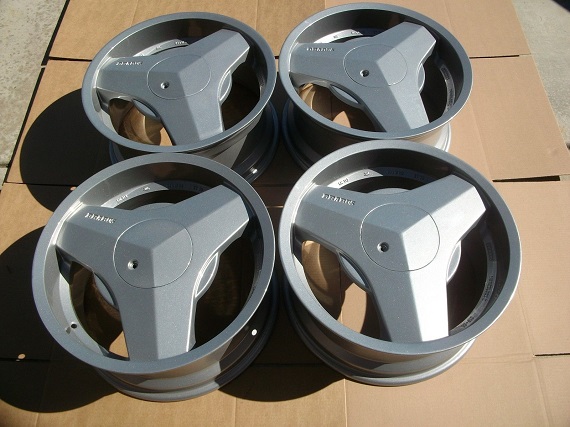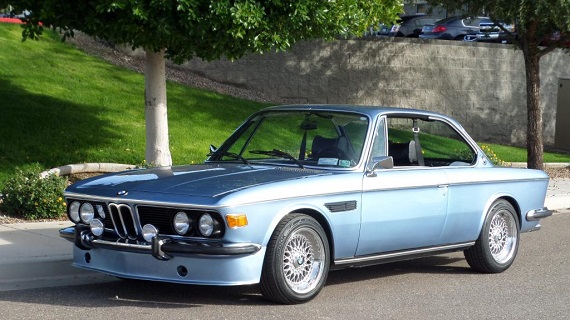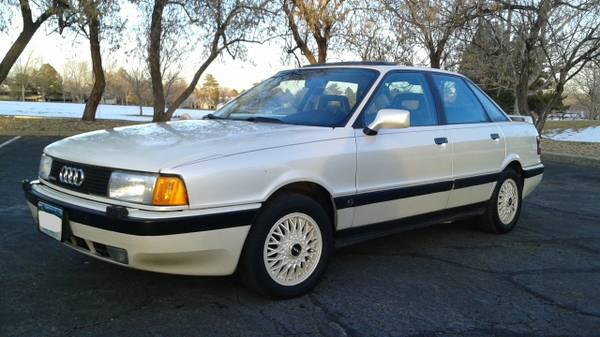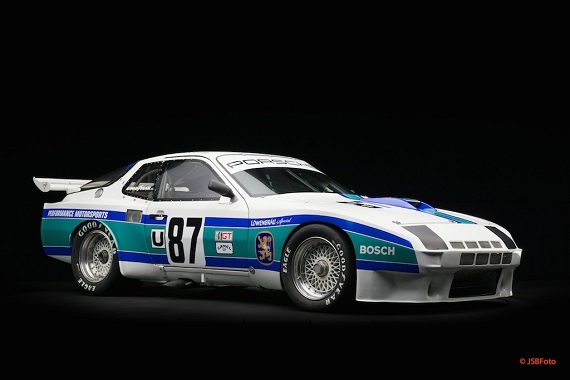I have another few rare sets of wheels to check out this week, starting with some polarizing but cool Brabus wheels. They’re pricey but quite a way to set your Mercedes-Benz apart. There’s also a set of BBS RX wheels which remind me of some of the great designs gone by since BBS switched hands. This week I found another set of Rial wheels, this time slightly different with a large offset. There’s also a rare set of Volkswagen Votex wheels. And if you’re feeling ridiculously rich and have an early 911 that you want to have a race look, there’s a set of ultra-rich magnesium Minilites that is priced around the cost of most cars I look at. Enjoy!
Tag: BBS
Just the other day, Nate wrote up a resto-modded BMW 325ix. There were some nice touches and a considerable amount of work done, but also a few pretty polarizing items – the gold BBS turbofan-look replica wheels, the gold custom decals and the factory BMW sport seats that were recovered with Recaro fabric. As if to answer some of the issues with those items, a rare European-spec 1979 323i with some period modifications turned up for sale:
CLICK FOR DETAILS: 1979 BMW 323i on eBay
3 CommentsI’ve made several references comparing the BMW 8 series to a few Ferraris, suggesting that it was perhaps a budget alternative to running a 456GT, for example. However, the E31 isn’t the only Ferrari-esque design to come from Munich; in many aspects, the E9 coupe shared some visual DNA with the Ferrari 330 2+2 from the 1960s. Now, for some that may sound like heresy and I can appreciate that; but take off the Rosso-colored glasses for a moment and look at the side profile of a 330 GT versus the E9 coupe; it’s nearly identical. The rear end treatment was quite similar as well, and while the grill on the BMW was obviously quite different the two even shared a quad-headlight setup. Obviously, underneath the Ferrari had that wonderful Colombo V12 versus the rather pedestrian inline-6 in the BMW; but pound for pound the BMW punched hard, especially in CSi trim. With 200 horsepower on tap it was certainly no slouch, especially in the midst of the oil crisis which neutered most V8s in America. It would take another two generations for the Big Three to break back into the 200 horsepower realm with nearly double the displacement of the E9. But the E9 wasn’t about straight line performance; it was a whole package – a speedy grand touring coupe with luxurious appointments and gorgeous looks:
CLICK FOR DETAILS: 1974 BMW 3.0CSi on eBay
1 CommentThe late 1970s and early 1980s were a trans-formative time for Porsche. After a long string of successes with the Porsche 911 and 917 on the race track, they were moving into new territory with a series of front engined cars. Not only were these cars appearing on the race track, though; Porsche intended the 928 and 924 to be the replacements for its aging 911/912 lineup. The result was a special time for water-cooled fans, as Porsche spent a considerable amount of time and resources in between the end of the 917 project and the beginning of the new 956 project on the front engined 924. In order to tie the model to performance and wins on the track, Porsche undertook an ambitious racing schedule, entering the 924 in everything from showroom production-based “D-Production” in SCCA to the World Rally Championship and Le Mans. The resulting lineup of impressive turbocharged 924s have become legendary, but ultimately they’re much more rare to come across than their 911/934/935 counterparts. Still, in the early 1980s they were cutting edge – 2,000 lbs, 400+ horsepower and massive flares hiding 935-spec BBS center-lock magnesium wheels. Sound awesome? You better believe it:




